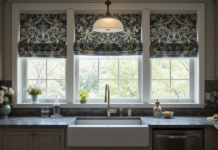Last Updated on July 9, 2023 by
Housing prices nationwide were already high before the pandemic began. Then, between June 2020 and June 2021, housing prices skyrocketed another 13.2%. If you or a loved one needs a place to call home (but can’t afford these sky-high prices), what are your options? Before you give in to despair, you should consider two hot trends in housing right now: granny flats and tiny homes. They sound like the same thing, but are they? How are they similar, and what makes them different? Most importantly, are either of these options the solution when you are you’re looking for granny flats vs. tiny homes?
We’ll answer these important questions and much more, so keep reading!
Table of Contents
What Is a Granny Flat?
“Granny flats” go by many different names — and they’re not just for granny. You might also hear them called:
- Accessory dwelling units (ADUs)
- In-law suites
- Casitas
- Carriage house
- Backyard cottages
In general, granny flats function as self-contained, fully-functional homes. It has a bathroom and kitchen or kitchenette, as well as a living area and sleeping area. The flat may feature a separate bedroom, or it might be an open-concept studio design instead.
Does a granny flat have to be a flat (apartment)? Not necessarily.
Many granny flats are standalone dwellings on the same property as a larger home. They may be fully detached or partially attached to the home. Other popular options include converting a basement, attic, or garage into a granny flat.
When it comes to granny flat designs, you’ll be relieved to learn that you don’t have to hire an architect and design an entire from scratch. As The Ultimate Guide to Pre-Approved ADU Plans explains, you can quickly build a granny flat that’s pre-approved in your area!
What Is a Tiny Home?
So then, what is a tiny home? Much like a granny flat, it’s a self-contained unit designed for independent living. At a bare minimum, there will be a bathroom, kitchenette, and a place to sit and sleep.
To be considered a tiny home, the unit should be no larger than 400 square feet. The most common size for tiny homes is between 200-300 square feet.
In comparison, the average granny flat is between 800-1,000 square feet. The concept is the same, but a tiny home is, well…tinier.
Comparing Granny Flats vs. Tiny Homes
Aside from the size difference, how else do tiny homes and granny flats differ? Let’s consider three key differences.
1. Permanence
For a building to be considered an accessory dwelling unit, it must be permanently attached to a foundation. Why does this make a difference?
Some tiny homes are built on wheels and designed to be mobile. No matter how decked out your tiny home is with the latest and greatest technologies, if it’s not on a foundation, it’s not considered a permanent residence.
Although this might seem like a technicality, it makes a big difference when it comes to legality (which we’ll discuss more in a moment).
Many people think they can move into a mobile tiny home and park it anywhere they like, but this isn’t the case. Different cities and states have different laws about where you can (and can’t) park a mobile tiny home or RV. You’ll need to look up laws in your area to understand if you can park on private land, public land, or public streets.
2. Legalities & Purpose
This also crosses over into legal gray areas, depending on what you plan to do with your granny flat or tiny home.
In some areas, people build granny flats to tiny homes to rent out on a site like Airbnb. In some jurisdictions, this is 100% legal. In others, it’s completely illegal.
If you’re adding a second dwelling to your property, it’s generally assumed that someone will be living in it long-term. You may be allowed to rent it out annually, but this could also be prohibited in your area. You’ll need to research zoning laws in your locale and make sure they align with your intended purpose.
You may also learn that there are restrictions on the size and location of your tiny home or granny flat. For example, zoning laws may require that it’s no more than 50% the size of the existing home on the property. Or, it may need to be set back a certain number of feet from the driveway, curb, or main home.
3. Intended Occupant’s Needs
As you’re researching granny flat designs, you need to think about who’s going to be living there. A flat for your 88-year-old mother will look different than a backyard cottage for your vacationing kids or grandkids.
For example, a granny flat for your elderly mother could include safety features like grab rails and a two-way intercom. To make mobility easier, you could also design it completely flat with no stairs inside or around the porch. You’ll want to include large windows or skylights to ensure plenty of natural light gets inside.
On the other hand, let’s say you’re building a flat for your adult children and grandkids when they visit. In this case, you may want a floor plan that features two bedrooms so everyone has their own space. You might also forego a full kitchen and opt for a mini-fridge and microwave if you expect everyone will share meals together in the main home.
Granny Flats vs. Tiny Homes: Which Solution Is Best for You?
In the battle of granny flats vs. tiny homes, there’s no right or wrong answer. Each can be the perfect solution depending on your needs and circumstances.
As you continue researching housing options, bookmark this article for reference. You never know when it might come in handy!
Did you enjoy this post? Looking for more great tips and advice? Stay right here and keep browsing our site!
Read More: BOOK OR REFILL GAS CYLINDERS IN A CLICK
Apart from that, if you are interested to know about Big Ideas for Tiny Spaces then visit our Home Improvement category.



























